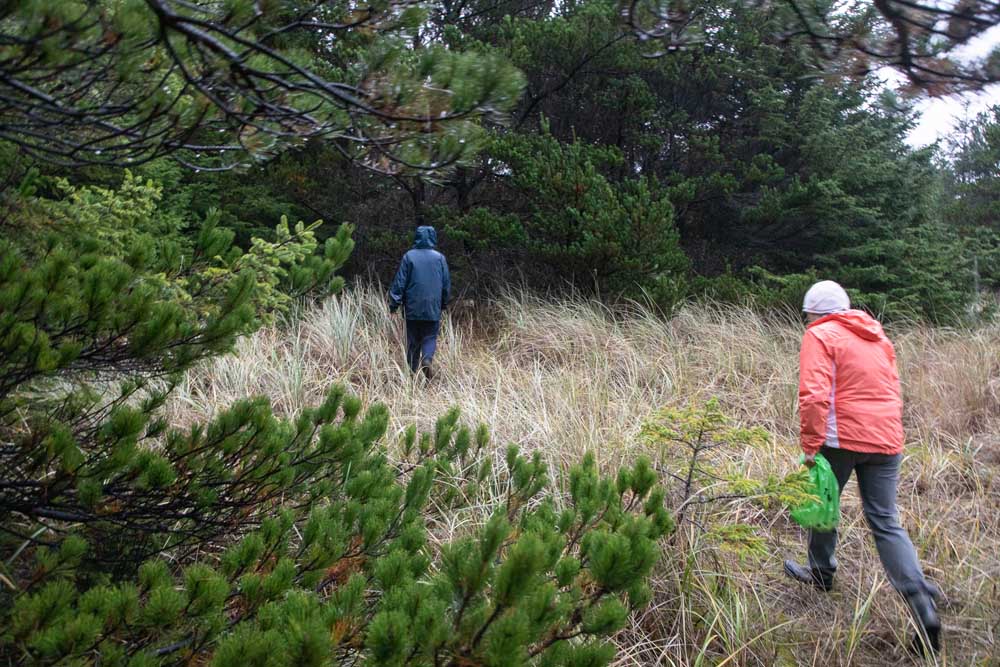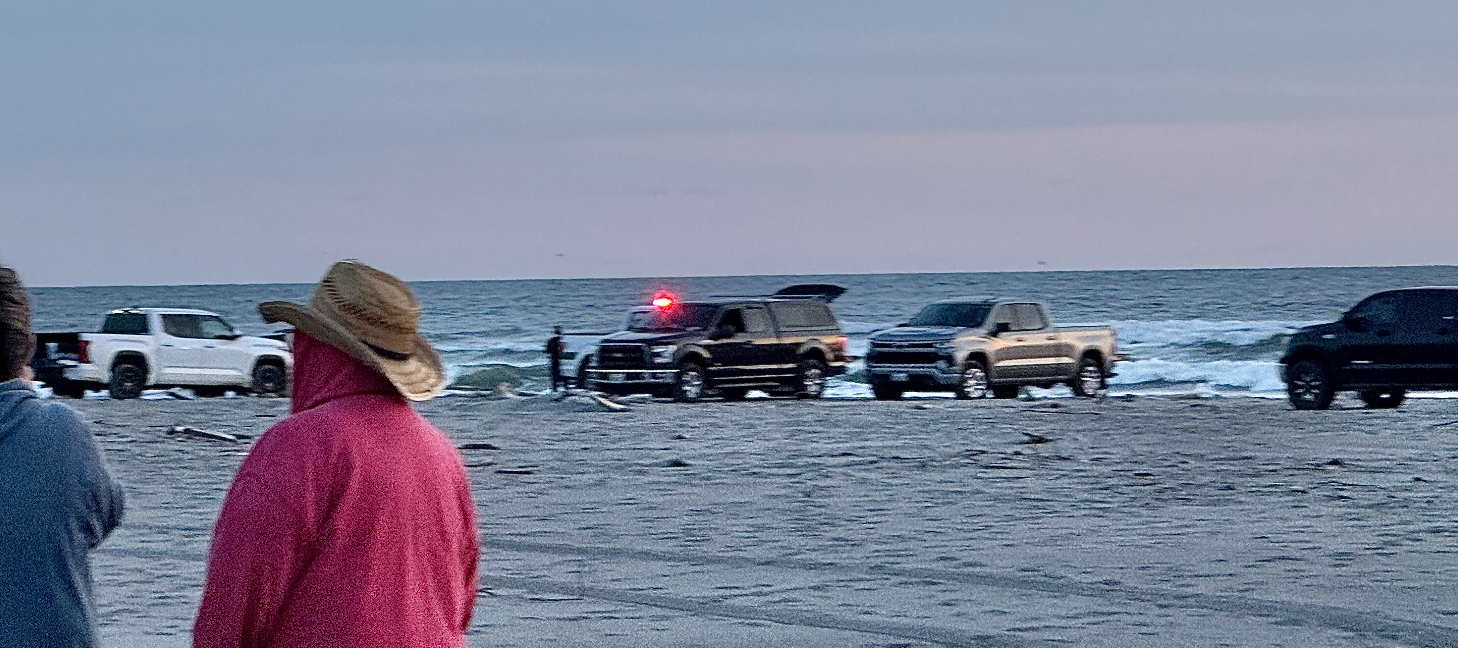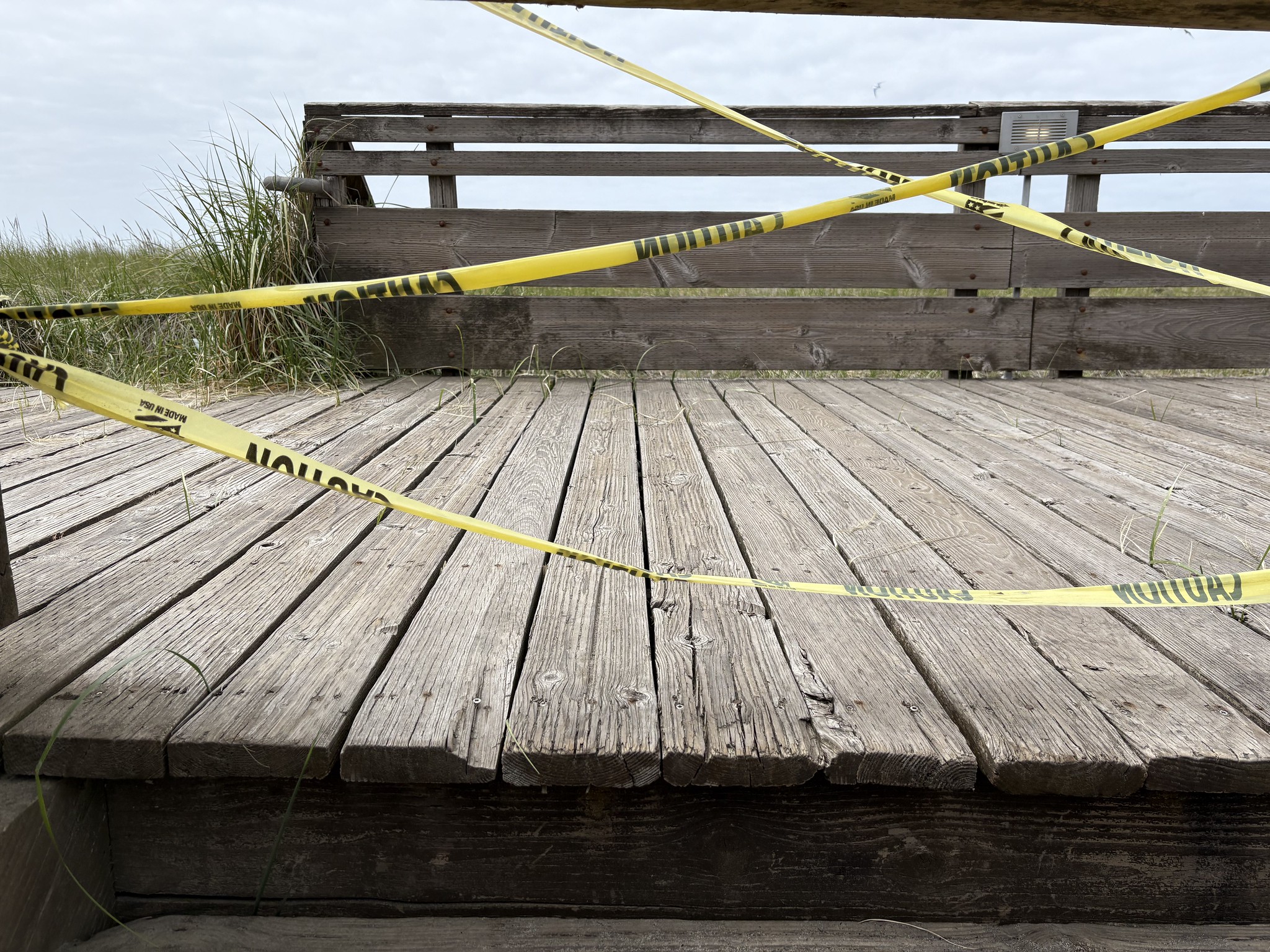Mushroom hunters: Enjoy Peninsula’s fungi abundance
Published 9:57 am Tuesday, November 17, 2020

- Mushroom hunters Svetlana Lynch and Elena Za search for fungi, part of a weekly ritual during the peak of the fall mushroom season.
LONG BEACH — The rain was coming in steady sheets for several hours before they started their search.
Armed with a knife and robed in rain gear, Svetlana Lynch and Elena Za began their mid-November hunt around Loomis Lake State Park, part of a weekly ritual during the peak of the fall mushroom season.
Be sure to obtain permission before mushroom hunting on private property, and to obey regulations on public property.
As a general rule, Washington State Parks permit harvest of up 2 gallons of edible mushrooms per day for personal consumption:
“The recreational harvest, possession, or transport of… edible mushrooms… is allowed up to an amount of two gallons per person per day, unless otherwise posted at the park. The harvest amount may be comprised of one or more edible species… No harvest of… mushrooms is allowed within a natural area preserve… Harvest techniques that involve raking or other techniques that have the potential to degrade park natural or cultural resources are prohibited.”
However, Cape Disappointment State Park is a posted “No mushroom harvesting” area, in part to discourage harvest of species containing psilocybin, a controlled substance under state and federal laws. Check for signs in other state parks for specific rules in each.
It is unlawful to harvest mushrooms in our area’s extensive National Wildlife Refuge system.
“This is perfect weather,” Lynch said as she stepped out her car and was greeted by gusting wind and saturating rain.
Big year for boletes
The primary quarry included slippery jack, king bolete and saffron milk cap mushrooms, a few of the multitude of edible mushrooms commonly found on the coast.
“This fall was absolutely incredible, especially for king (bolete) mushrooms,” Lynch said.
Each forager has their preference in regard to mushrooms — what they seek and how they like to prepare or preserve them — but a few varieties have an especially broad appeal.
“Usually, people are often picking the matsutake,” Lynch said. “They call it the pine mushroom.”
The matsutake is coveted in culinary circles for its unique flavor. As a result, the mushroom is highly sought and sometimes mistaken.
Lynch offers simple advice when in doubt when identifying a mushroom:
“If you’re not sure — don’t touch,” she said. (Contrary to popular belief, merely touching a mushroom is unlikely to result in harm. But inexperienced harvesters should never consume any fungi unless 100% certain it is an edible species.)
A knife and a delicate touch
A knife and a delicate touch are all that’s necessary for harvesting mushrooms.
“We never pull them out, we cut the stump above the root,” Lynch said. “From the root others can come up.”
Visible mushrooms on the surface can be thought of as the fruit of a much larger underground organism made up of nearly invisible filaments in the soil. Although opinions are mixed, some believe that avoiding harm to the subsurface portion of the fungi gives them a head start for producing mushrooms the next season.
Within two hours, Lynch and Za had covered several miles, much of it spent crouching and ducking under pine branches while gathering a small bag of assorted edible mushrooms.
Lynch, who lives in Long Beach with her husband, is originally from Russia, where she learned to hunt for mushrooms, herbs and berries during trips to the Siberian Taiga forest with her grandparents, beginning at age 4.
“They explained to me how and what to harvest with care for nature, to not damage plants, trees and forest beds, and how to find a way in the forest and not get lost or disoriented,” Lynch said.
Today Lynch relies on the sound of the nearby ocean surf when searching for mushrooms through the thick undergrowth on the coast, where it is easy to become disoriented.
For more on this subject, see tinyurl.com/Mushroom-Beginners-Guide.





